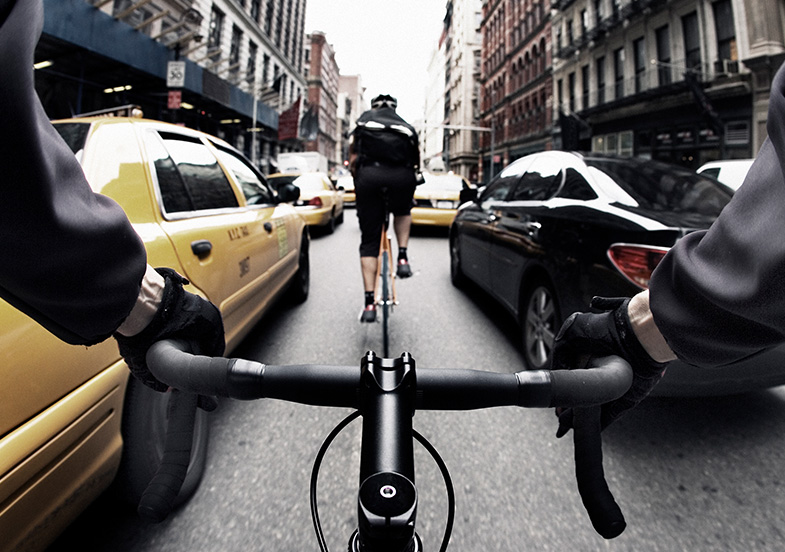The Problem
Bicycle collisions are among the highest reported light vehicle crash fatalities, with the largest percentage increase in light vehicle accidents in 2015 (representing the highest increase since 2008). Bicyclist detection by driver assistance systems have proven difficult to develop — monocular-based bicyclist detection in naturalistic driving video is very challenging to reliably achieve, due to the high variance in bicyclist appearances and the complex background of the naturalistic driving environment.
The Question
What testing protocols can be developed for bicyclist pre-collision systems (PCS) to ultimately decrease vehicle-to-bicycle collisions?

What We Did
We analyzed data from NHTSA crash databases and other data sources to better understand actual vehicle-to-bicycle collisions. By identifying normal cyclist behavior patterns, we were better able to monitor for abnormal behaviors that can be mitigated by PCS systems. Using this information, we then developed a bicyclist surrogate for use in realistic test scenarios.
The Result
Through this study, we were able to identify the following:
- There is bell-shaped region in front of the vehicle which can be considered abnormal and dangerous for bicyclists. This region must be a focus in the design of PCS systems.
- We were able to estimate the lateral position of bicyclists moving in a direction parallel to the vehicle’s path. The median position of bicyclists relative to the vehicle on the right side was 3.9 meters, and on the left side was 4.4 meters. This data will be used to inform PCS test scenarios.
- We were able to estimate vehicle and bicycle speeds in limited conditions. The median of vehicle speed was 19.8 mph, and the median bicycle speed was 16.7 mph, information that will be used to inform PCS test scenarios.
This is a project in collaboration with the Transportation Active Safety Institute (TASI), Indiana University, Purdue University and the Ohio State University.
